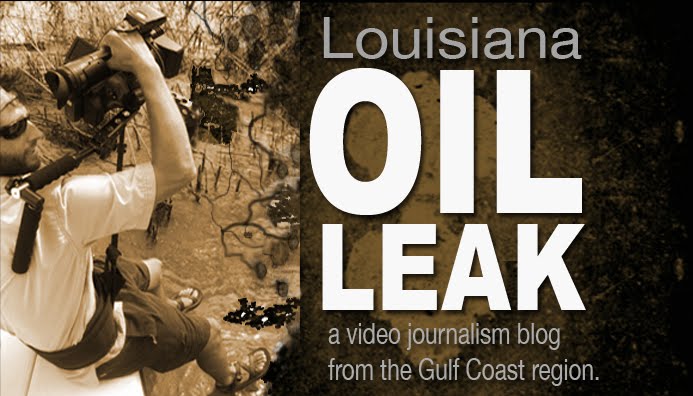On Friday I went out on a boat from Hopedale, LA. I went with a friend of mine, Glen Mankin and his son Austin. Glen is an oyster and crab fisherman and Austin is a very talented fifth grader with a natural film making and writing ability.
Shortly after the leak began, I called the Mankins to see how things were going for them. Since, then Glen and I have talked a good bit about what is going on and we share the same fears for the wetlands and the fisheries.
We took Glen's boat out to Brush Island which is one of the last land formations of the Louisiana marsh before reaching the open waters of the Chandeleur Sound. Marsh Island is the site of a shell midden that was made by ancient Native American tribes. Over many years, the tribes would leave the shell castings in piles, and over the years these mounds would get quite large.
We went to the island to search for tar balls from the BP Oil Leak. What we found may have been even more disturbing. Upon arriving at the island, we could see thick black waves washing up against the shore. Thinking that this was oil, my heart sank upon first sight of the sludge. I grabbed my camera and the three of us walked over to investigate. With a closer look, we were able to determine that it was not oil in the water, but it was soil being washed off the island. Inside the soil were tiny pieces of grass.
Glen has spent a lot of time near this island and told me that he was not accustomed to seeing this. We continued to survey the island, but we didn't find any tar balls. Another alarming site we did find were slicks of a milky white substance on top of the water. Without knowing what we found, we wrapped up our journey and headed back to Hopedale.
I got a call from Glen on Sunday. He sounded disturbed and I asked him what had happened. He had just left the mobile command center in Hopedale. He was signing up his boat for a few days of work with the Vessel of Opportunity Program. One official there told him that the white substance we saw at Brush Island was the dispersant chemical that BP is using to break up the crude oil. The soil and grass in the water was a result of the dispersant killing the grass to the root and the wave action breaking up the land.
I've yet to hear an official confirmation of this report, but for now I will treat it as true. If this is the case, then the chemical dispersant is moving further inland than the oil is. Hopefully, something will develop over the next few days to explain why this might be happening. Either way, this is not good for the wetlands and fisheries that we depend on.
Monday, May 24, 2010
Subscribe to:
Post Comments (Atom)


No comments:
Post a Comment